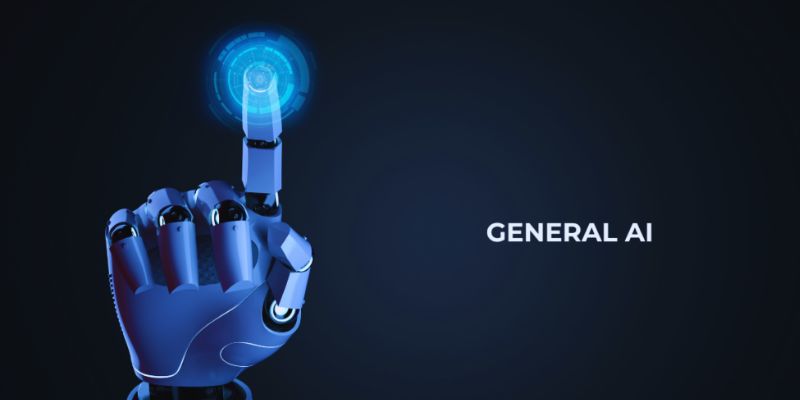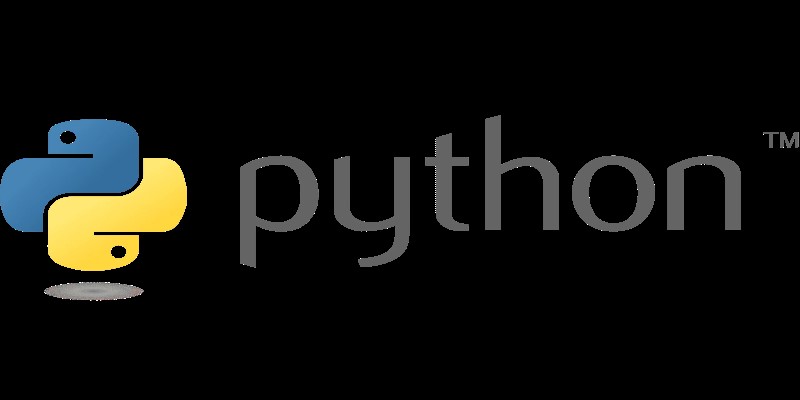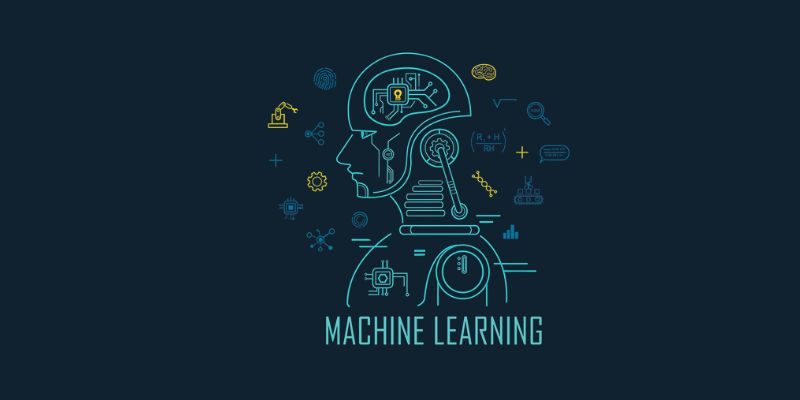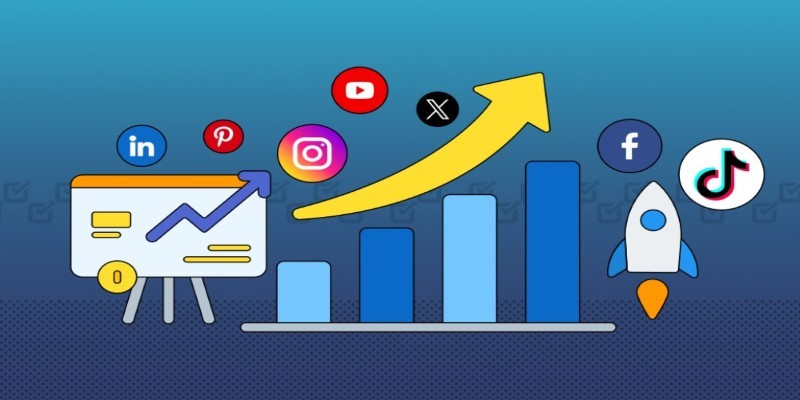Advertisement
Artificial intelligence (AI) daily transforms our lives, jobs, and problem-solving approaches. However, all artificial intelligence is not the same. Certain artificial intelligence can only lead to one category. We term this narrow artificial intelligence. For example, it can help in movie recommendations or song searches. It can only accomplish that task, nothing else. In contrast, general AI can learn many skills like a human. It can solve new problems across different areas.
The biggest difference between them is adaptability. General AI can learn and adapt, but Narrow AI is limited and cannot grow independently. Knowing this clarifies our knowledge of what artificial intelligence can and cannot accomplish. In this article, we will discuss adaptations and the reasons behind the greatest importance of artificial intelligence.
Narrow AI, also called weak AI, is designed for a specific purpose. It cannot complete tasks outside of its training range. A spam filter, for instance, detects emails marked as spam. It cannot, however, answer challenging questions or engage in gaming. It performs just for its designated use. Other limited artificial intelligence applications include movie recommendations, facial recognition, and voice assistants. These systems perform their one purpose quite brilliantly using data.
There is narrow artificial intelligence applied everywhere nowadays. It helps phones to respond to your voice. It enables physicians to interpret X-rays quickly. It even facilitates autonomous car driving. It cannot, however, pick up fresh work on its own. To grow or change, narrow artificial intelligence always requires human assistance. It cannot have human-like thinking. It follows rules and patterns created by humans. It may not be adaptable, but it performs its task intelligently. For this reason, it is labeled limited and unchangeable.

Strong AI is another name for general artificial intelligence. It can solve several issues, think, learn, and grow. It can perform tasks without particular instruction and functions like a human brain. Imagine one artificial intelligence writing music, driving a car, and assisting with homework. General artificial intelligence can adapt to many conditions, making this feasible. It doesn’t exist right now, but scientists are working on it.
It is not a working system but an idea for now. However, it is a big target. It involves designing artificial intelligence that learns and understands like a human being. General artificial intelligence would not need different projects for every task. Once learned, it might apply that knowledge to tackle fresh challenges. For instance, it might learn algebra and grasp physics using the same reasoning. This kind of smart learning is not feasible in limited artificial intelligence nowadays.

General artificial intelligence differs from narrow artificial intelligence in part by adaptability. While general artificial intelligence can learn, reason, and apply information across many circumstances, limited artificial intelligence is taught to complete one task. Adaptability is the ability of an artificial intelligence system to pick up new jobs without human reprogramming. General artificial intelligence seeks to replicate the human brain through context, conclusion drawing, and solving challenging issues.
A General artificial intelligence might, for instance, learn arithmetic and then apply that reasoning to grasp science or even tackle practical problems. Bound to one purpose, narrow artificial intelligence lacks this adaptable learning process. If a task evolves, narrow artificial intelligence has to be retrained or rebuilt. In dynamic sectors like healthcare, education, or disaster response—where daily problems vary—adaptable artificial intelligence systems are more valuable. It makes flexibility a quality and the fundamental aim underlying the evolution of general artificial intelligence and a secret to the next invention.
The practical application of artificial intelligence depends much on adaptability. Because narrow artificial intelligence can only accomplish one task, it is constrained. A voice assistant might, for instance, respond to simple questions, but unless it is retrained, it will not assist with other tasks. Its value declines with this lack of adaptability. Conversely, broad artificial intelligence can pick up several tasks and use what it discovers in several contexts. If it grows from one issue, it can apply that learning to address fresh ones. It benefits many different fields.
In medicine, it can assist in diagnosing diseases and therapy recommendations. In the classroom, it might lead students through assignments or brand-new courses. It might handle data analysis, project management, and company customer service enhancement. AI is more useful and practical because of its adaptability. An adaptable artificial intelligence system can develop with our demands and meet upcoming difficulties. Thus, the secret to actual artificial intelligence success is adaptation.
Although both general AI and narrow AI have advantages, the task will determine which one is more suited. For particular tasks, narrow artificial intelligence is quite beneficial. It operates within constraints rapidly and effectively. A voice assistant might instantly respond to questions and suggest songs based on your tastes. It cannot, however, accomplish much outside of that.
On the other hand, general artificial intelligence is more accommodating. It can pick up fresh tasks and change to fit various problems. It is not constrained as narrow artificial intelligence is. All in one system, general artificial intelligence might help with homework, car driving, or even story creation. However, General AI is under development despite its great overall potential. Narrow artificial intelligence is currently more often employed and dependable for particular tasks. General artificial intelligence might be the greatest fit for many multiple roles.
General artificial intelligence and narrow artificial intelligence differ mostly in their adaptability. Although narrow artificial intelligence is effective for some tasks, its potential is limited by adaptability. “General AI can learn and grow like the human brain. That’s why it holds great promise for the future. This flexibility makes it a great tool for the next years. For many practical uses, Narrow AI is the more dependable option for now. General artificial intelligence might one day completely change our use of artificial intelligence in all fields of life as it develops.
Advertisement

How to handle NZEC (Non-Zero Exit Code) errors in Python with be-ginner-friendly steps and clear examples. Solve common runtime issues with ease

Explore how artificial intelligence improves safety, health, and compliance in manufacturing through smarter EHS systems.

Learn how to create professional YouTube videos using Pictory AI. This guide covers every method—from scripts and blogs to voiceovers and PowerPoint slides

In this article, we talk about the types of neural networks. CNN vs RNN vs ANN, and how are they all different.

Need to test or run Python code without installing anything? These 12 online platforms let you code in Python directly from your browser—ideal for scripts, demos, or full projects

Discover how machine learning is shaping the future with smarter tools, personalized tech, and new opportunities for innovation

Understand the differences between General AI and Narrow AI, concentrating on adaptability, tasks, and real-world applications

Looking for a reliable AI essay writer in 2025? Explore the top 10 tools that help generate, structure, and polish essays—perfect for students and professionals

Explore 6 practical techniques for displaying lists in Python using tools like the print function, for loop, and f-string formatting. This guide helps you show list data cleanly and clearly for real-world use

Find out the 8 top-rated AI tools for social media growth that can help you boost engagement, save time, and simplify content creation. Learn how these AI-powered social media tools can transform your strategy

How Oppo’s Air Glass 3 XR brings AI-powered VR glasses to everyday life with smart features, sleek design, and seamless usability in real-world settings

How to translate your audio using Rask AI to create multilingual voiceovers and subtitles with ease. Discover how this AI tool helps globalize your content fast